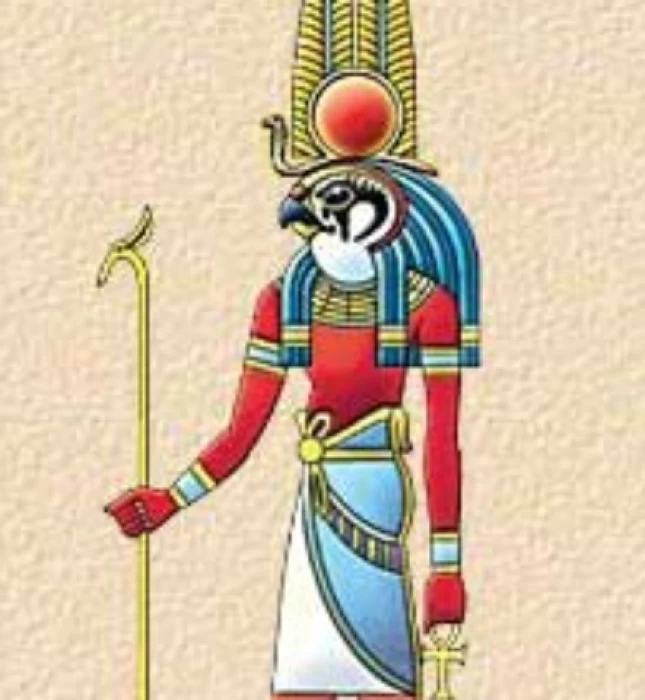
O deus Montu | deus Moutu do antigo Egipto
O deus Montu, o antigo deus egípcio da guerra, foi representado sob a forma de um falcão e escrito em hieróglifos como Mont ou Mentu. O significado do nome do deus Munto na antiga língua egípcia é que ele é um beduíno tal como foi interpretado como um vagabundo no seu rosto. outra divindade que provavelmente teve origem no Alto Egipto, e mais tarde seria conhecido como o "Rei dos Deuses". Foi durante este período que o papel de Montu na religião egípcia assumiu os verdadeiros atributos de um deus da guerra. ele tornou-se uma guerra.
Montu foi uma das manifestações que foram afectadas pelo sol ardente do deus Ra e que muito provavelmente são referidas pelo nome Montu Ra. pela 12ª Dinastia, Montu ficou subordinado a Amun Ra... depois de ter elogiado o herói da história por ter derrotado o homem forte. Havia uma relação entre Montu e o deus Buchis, devido à existência de uma ligação entre o touro enfurecido e a guerra, uma vez que o touro é um símbolo de poder no passado.
A antiga arte egípcia retratava Monto na forma de um homem, mas ele veio com a cabeça de um falcão, e por vezes veio em Tiro com a cabeça de um touro. O deus Munto usa o disco do sol entre dois pilares, e diz-se que são duas penas, e que são uma referência ao céu e ao touro, significando força e guerra.
Facts about the god Montu
Montu was one of the manifestations that were affected by the burning sun of the god Ra and are most likely referred to by the name Montu Ra. If you are interested in discovering mythology about the god Mntu, book our Egypt travel packages to Luxor , by the 12th Dynasty, Montu became subordinated to Amun Ra. after he praised the story hero for defeating the strongman. There was a relationship between Montu and the god Buchis, due to the existence of a link between the raging bull with war, as the bull is a symbol of power in the past. All this historical information will be relevant during your Luxor day tours.
Ancient Egyptian art depicted Monto in the form of a man, but he came with the head of a falcon, and sometimes he came in Tyre with the head of a bull. The god Munto wears the disk of the sun between two pillars, and it is said that they are two feathers, and they are a reference to the sky and the bull, meaning strength and war. If you are an historical person and interested in discovering more and more about Egyptian pharaohs and its mythology, head to Luxor or Aswan day tours.
The god Montu, the ancient Egyptian god of war, was depicted in the form of a falcon and written in hieroglyphs as Mont or Mentu. The god Montu is one of the Egyptian gods that you will find in their history during our Egypt tours. He has a lot of places for worship, one of the most famous places is Tyba, it is included in our Egypt day tours
The meaning of the name of the god Munto in the ancient Egyptian language is that he is a Bedouin as he was interpreted as a wanderer on his face. another deity who probably originated in Upper Egypt, and would later be known as the "King of Gods". It was during this period that Montu's role in Egyptian religion took on the true attributes of a war god. He became a war.
The temple dates back to the reign of King Thutmose III (1481-1425 BC), one of the kings of the Eighteenth Dynasty. He constructed parts of the temple on the ruins of an older temple, according to the most reliable accounts. It was renovated by King Amenhotep III (1393-1353 BC), during the middle of the same dynasty...According to him, the temple included a huge gate that was refurbished during the Ptolemaic period, as well as an avenue of rams, which was common at the time for ancient Egyptian temple entrances. He then led to the inside of the temple, which included a hall, a courtyard, and a sanctuary on the south side. Around the temple were a number of storage and daily service chambers.
He indicated that the temple had some annexes, including a wall surrounding all parts of the temple, a sacred lake, and a well. Another entrance connected the temple to the Karnak temple complex via a massive stone gate located in the mudbrick wall constructed by King Nectanebo I of the Thirtieth Dynasty.














